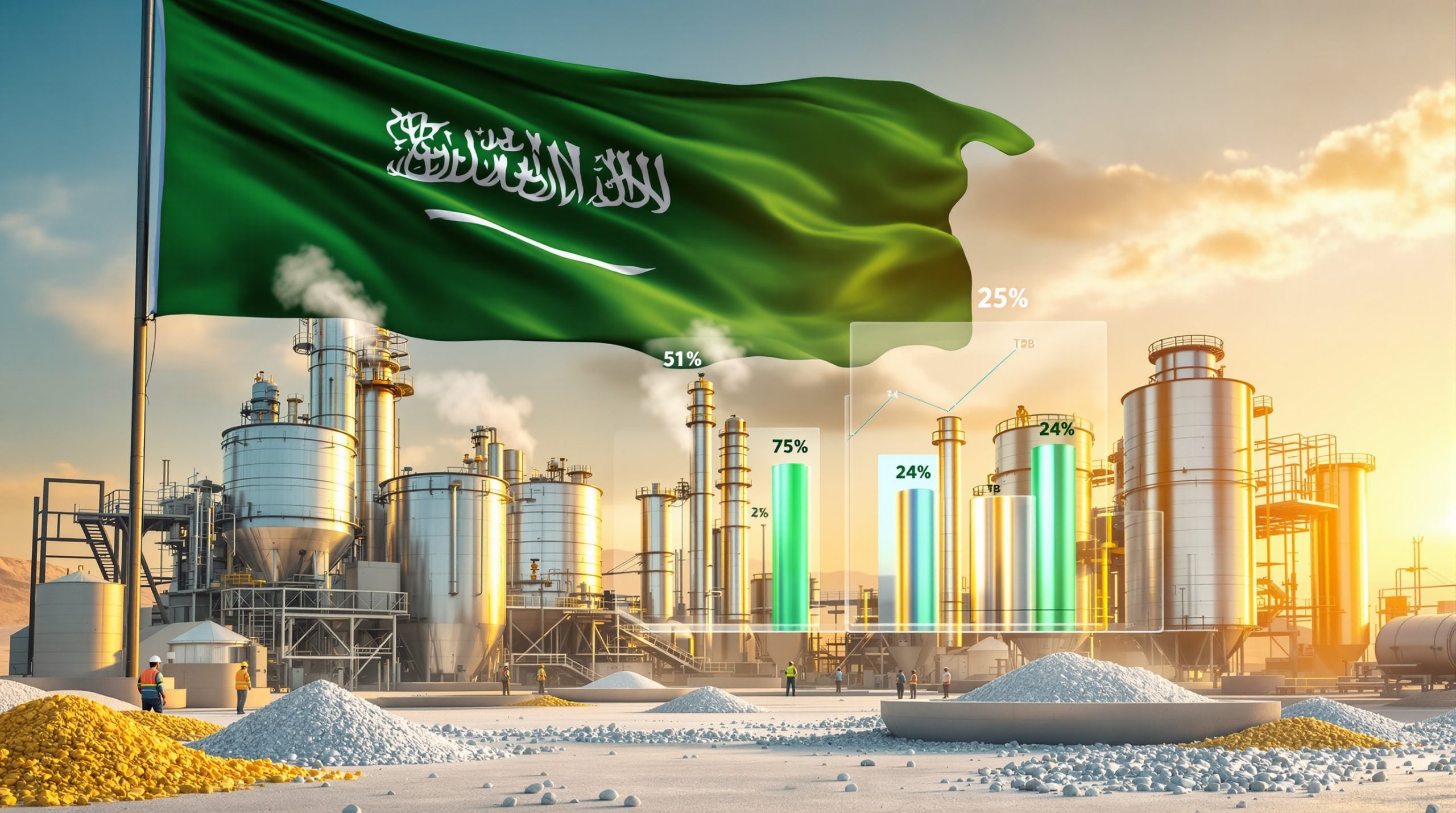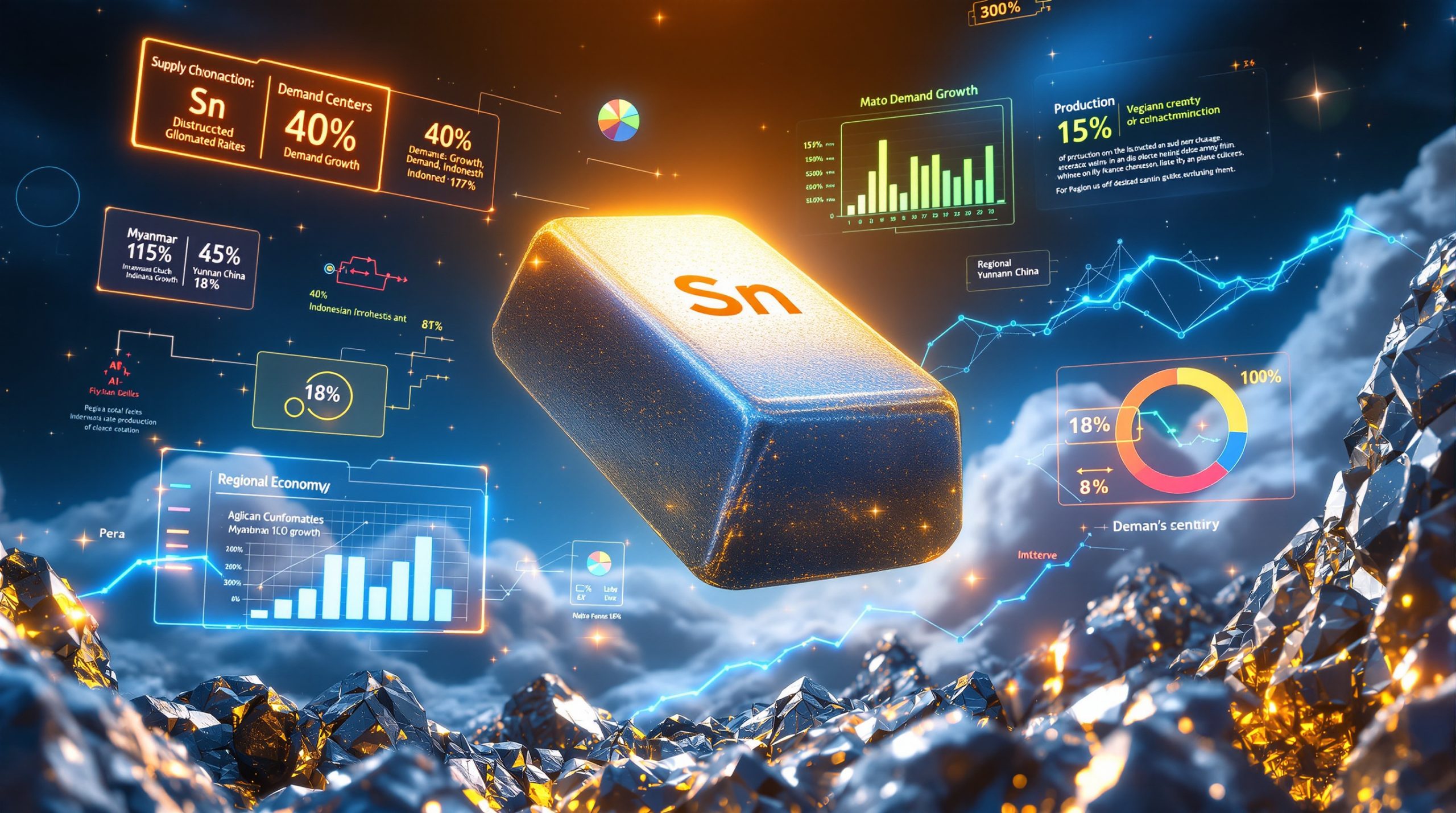Understanding the Strategic Shift in Rare Earth Economics
The Pentagon rare earth price floor marks a watershed in global critical minerals policy, fundamentally reshaping how rare earth elements are sourced, priced, and secured outside of China. By deploying a decade-long price guarantee for neodymium-praseodymium (NdPr) magnets and investing $400 million for a 15% equity stake in MP Materials, the U.S. Department of Defense has introduced a market mechanism designed to create supply chain independence and break away from China's historically dominant pricing benchmarks.
This intervention catalyses a dual-market structure: Western markets now operate with a security premium, dictated not only by production costs but by geopolitical imperatives and state-backed purchasing commitments. As a result, manufacturers, OEMs, and investors find themselves in a market where price floors ensure that critical material projects—once deemed speculative—become financially viable investment opportunities for the first time in decades.
Key market shifts include:
- Establishment of ex-China benchmarks: Pentagon-backed contracts and OEM offtakes (such as Apple's partnership with MP Materials) anchor new global price points.
- Structural divergence: Chinese markets remain governed by quotas and policy, while Western transactions reflect strategic and security priorities.
- Long-term planning: Guaranteed pricing enables producers like MP Materials, Energy Fuels, and upcoming projects in Australia and Africa to plan expansions or greenfield development with unprecedented confidence.
The decoupling of Western rare earth economics from Chinese competitive constraints signals a new era in critical minerals, where value is measured by access, reliability, and strategic utility, not just production cost.
What Is the Pentagon's Rare Earth Price Floor Agreement?
The Pentagon rare earth price floor agreement is a groundbreaking policy designed to ensure a stable, secure, and Western-controlled supply of NdPr products for high-tech and defence applications. Key features include:
| Component | Specification |
|---|---|
| Price Guarantee | $110/kg for NdPr products |
| Duration | 10 years (through 2035) |
| Government Investment | $400 million equity in MP Materials |
| DoD Equity Stake | 15% in MP Materials |
| Purchase Commitment | 100% of new magnet facility output |
This arrangement is highly significant for several reasons:
- Price insulation: At $110/kg, the floor is set far above recent Chinese spot prices, providing a buffer against future price volatility and dumping.
- Government-backed security: The U.S. government, as both investor and purchaser, now shares the risks and rewards of rare earth production, creating a partnership model that benefits national security and industry resilience alike.
- Investment catalyst: The $400 million injection removes a critical financing hurdle for advanced technology upgrades and capacity expansions at facilities like Mountain Pass.
The agreement operates as a floor-only mechanism, ensuring MP Materials receives at least $110/kg for its NdPr output. If global market prices rise above this threshold, the company may realise higher revenues, unless contract specifics stipulate otherwise. Furthermore, this policy structure is designed to send a strong market signal, inviting further private investment into rare earth supply chain projects by eliminating the primary risk of revenue instability.
How Does This Compare to Current Market Pricing?
The Pentagon rare earth price floor represents a dramatic premium over prevailing Chinese market levels, solidifying a unique price regime for Western markets:
| Market Segment | Chinese Pricing 2025 | Pentagon Floor | Premium |
|---|---|---|---|
| NdPr Oxide | $70-80/kg | $110/kg | 38-57% |
| Spot Market | $60/kg | $110/kg | 83% |
For heavy rare earth elements, the price gap is even more pronounced:
| Element | China Spot | Ex-China (2025) | Premium |
|---|---|---|---|
| Dysprosium | $200–230/kg | $955/kg | 315–378% |
| Terbium | $1,000-1,100/kg | $4,150/kg | 277–315% |
These exceptional premiums illustrate the market's bifurcation:
- Western pricing stability: Policy guarantees and reputable OEM contracts harden the ex-China pricing structure, making price collapses unlikely for the duration of these agreements.
- Supply constraint effect: The floor ensures that Western projects become attractive even at higher cost structures, directly leading to new supply capacity.
Analysts, such as Canaccord Genuity, have updated price outlooks to reflect this policy effect—raising their long-term NdPr forecast to $130/kg. Consequently, pricing in the West now reflects incentive levels necessary for sustainable supply, decoupled from China's cost base.
Why Did the Pentagon Establish This Price Floor?
Strategic Supply Chain Independence
Over 80% of global rare earth processing remains in China. This extreme concentration exposes the U.S. and its allies to:
- Export restrictions and quotas: Chinese government policies have previously throttled supply or manipulated pricing, threatening security of supply for high-tech and defence segments.
- Market manipulation: Volatility and undercutting make it financially impossible for Western producers to plan investments or maintain operations.
The Pentagon rare earth price floor eliminates the core revenue uncertainty facing Western miners and processors, making the risk-return profile of rare earth projects palatable for institutional and private capital. According to US moves decisively to avoid dependence on China's rare earths, this strategic shift represents a fundamental restructuring of global supply chains.
National Security Considerations
NdPr-based magnets and heavy rare earths are essential in:
- Advanced missile guidance, radar, and electronic warfare platforms
- High-performance motors in next-generation aircraft, naval vessels, and satellites
- Secure communications and critical infrastructure
Without a secure supply, these systems are vulnerable to supply shocks, placing essential military and civilian technology at existential risk. However, the Pentagon's $700 million rare earth bet faces reality check after China's recent policy adjustments.
Economic Stability for Domestic Production
Traditional rare earth markets have been plagued by:
- Extreme price volatility—jeopardising project finance and continuous operation
- Unpredictable regulatory requirements in Western jurisdictions, further raising the cost of doing business compared to China
By underwriting a profitable price level for NdPr and potentially other REEs in the future, the Pentagon creates a reliable landscape for domestic supply chain growth. The policy also places rare earths on par with other strategic reserves, such as petroleum, for national security.
What Are the Immediate Market Implications?
Light Rare Earth Elements (LREEs)
The primary effect of the Pentagon rare earth price floor is a hardening of Western LREE prices:
- NdPr now trades at a significant premium, decoupled from China's Baotou reference.
- Ex-China benchmarks are being set not just by the Pentagon, but also by major OEMs through decade-long supply contracts.
Analysts expect this will attract more supply and investment to light rare earth mining and processing in North America, Australia, and select African projects.
Heavy Rare Earth Elements (HREEs)
Despite not being part of the initial price guarantee, HREEs like dysprosium and terbium already trade at extreme ex-China premiums. In late 2025, dysprosium fetched $955/kg (vs. $200–230/kg in China) and terbium $4,150/kg (vs. $1,000–1,100/kg).
These markets remain structurally tight due to concentrated supply and limited non-Chinese producers. Long-term forecasts still see heavy rare earths maintaining significant premiums, even as new projects like Browns Range attempt to address these deficits.
Key Immediate Effects:
- Western buyers, including defence contractors and automotive OEMs, increasingly seek out non-Chinese sources regardless of cost.
- Private equity, hedge funds, and strategic investors view rare earth projects as less speculative, increasing the pace of financing deals and M&A activities.
How Will This Affect Global Rare Earth Supply Chains?
Emerging Dual-Market Structure
The market is fragmenting into two distinct supply chain models:
Chinese-Integrated Supply Chain:
- Lowest baseline pricing
- Regulated by quotas and state policy
- Primary supply for Asian manufacturers and some global electronics giants
Western-Secured Supply Chain:
- Premium, policy-guaranteed pricing ($110/kg+)
- Stability via long-term public and private agreements
- Prioritised for defence, critical technology, and supply chain security
Investment Flow Redirection
The assured price environment has redirected global capital flows:
- Major banks and institutional investors are now underwriting loans and equity for Western-focused mining and processing projects.
- Technology innovation in separation, recycling, and advanced materials is seeing a funding boom, as policy floors eliminate the downside risks previously associated with large upfront investments.
Disclaimer: While the supply landscape appears poised for expansion, project delays, regulatory hurdles, and technical complexity can still prevent projected new supply from being realised on schedule. Investors should exercise caution and conduct thorough due diligence before committing capital.
What Projects Benefit from This New Pricing Environment?
Near-Term Production Expansions
Multiple advanced-stage projects benefit directly from the Pentagon rare earth price floor:
North America:
- MP Materials' Mountain Pass: Expanded separation, magnet-making underwritten by guaranteed Pentagon contracts
- Energy Fuels' White Mesa: Pursuing co-production of rare earth oxides alongside uranium at scalable volumes
- Ucore's Alaska project: Heavy rare earth separation using proprietary technologies
Allied Nations:
- Iluka's Eneabba (Australia): Full-spectrum rare earth processing and separation
- Arafura's Nolans (Australia): NdPr-centric flow sheet, project finance based on new price environment
- Peak Resources' Ngualla (Tanzania): Positioning as a diverse supplier of both LREE and HREE concentrates
Technology Innovation Acceleration
Stable pricing underpins:
- Automated separation technologies that lower operating costs and minimise environmental footprint
- Recycling and urban mining, unlocking value from end-of-life electronics, batteries, and electric motors
- Cleaner, greener refining, critical for Western markets facing intense regulatory scrutiny and community opposition to high-impact mining
What Are the Long-Term Strategic Implications?
Geopolitical Rebalancing
The Pentagon rare earth price floor sets a precedent for strategic materials policy worldwide. Other Western nations may pursue similar guarantees, hedging against strategic vulnerabilities. This could lead to the formation of interconnected, government-backed rare earth alliances spanning North America, Europe, and the Indo-Pacific.
Technology Development Acceleration
By eliminating pricing uncertainty, the U.S. accelerates its transition to:
- Electric vehicles and renewable energy, fields where rare earth magnet supply is mission-critical
- Advanced electronics and communications, reducing dependence on potentially unreliable supply chains
- Defence manufacturing innovation, de-risked by material availability guarantees
Market Maturation Timeline
Industry consensus places normalisation of rare earth pricing and supply somewhere between 2028 and 2030, aligning with the ramp-up of major new non-Chinese production sources. Even then, residual strategic premiums may persist—especially for the most critical heavy rare earths which remain challenging to source and process.
Speculative Note: If major Western projects face unforeseen delays, or if geopolitical tensions worsen, these government-backed floors could be extended beyond 2035, and security premiums could rise further.
How Do Industry Experts View This Development?
Investment Banking Perspectives
Canaccord Genuity, among others, recognises the Pentagon rare earth price floor as the base case for the next commodity price cycle, viewing guaranteed pricing as a sign of structural supply support rather than temporary market intervention. Their 2026–2027 NdPr forecasts of $99–110/kg support the notion that floor prices are now the baseline for Western contracts.
Supply Chain Security Analysis
Defence sector strategists see this move as equivalent to setting up a "strategic materials reserve"—on par with petroleum or food reserves. The guaranteed price functionally shifts rare earths from a market commodity to a semi-strategic asset, safeguarded by direct government involvement.
Market Psychology: Investors are now prioritising project delivery, operational readiness, and access to grant or procurement programmes over mere low-cost resource potential. In addition, the era of passive, cyclical rare earth investment may be ending, replaced by long-horizon, supply-focused deployment.
What Challenges Remain for Implementation?
Technical Execution Risks
Policy support can transform project economics, but it does not solve all hurdles:
- Complex processing: Western projects must master highly technical separations, often at lower economies of scale than their Chinese counterparts.
- Regulatory compliance: Strict environmental regulations and social licence requirements can delay project timelines and raise costs.
- Workforce development: The rare earth sector requires a blend of chemical, mining, and engineering expertise that has atrophied in many Western nations.
Market Integration Hurdles
Orchestrating a fully independent Western rare earth supply chain is a multi-industry challenge. OEMs, miners, refiners, logistics firms, and regulators all need to align around new standards for traceability, transparency, and risk-sharing.
Disclaimer: Policy floors can support supply growth, but underlying project quality, technical readiness, and regulatory navigation will determine which ventures succeed. Not every developer will thrive—even in a floor-price world.
Frequently Asked Questions
Will the Pentagon Price Floor Apply to Other Rare Earth Elements?
At present, only NdPr products have an explicit price floor. Should the model prove effective in boosting supply and resilience, further policy interventions covering heavy rare earths, such as dysprosium and terbium, are possible—especially given their acute supply tightness and military significance.
How Does This Affect Rare Earth Mining Stocks?
Investor interest has soared, drawing capital into both established producers and promising developers. However, diligence is crucial: technical risk, project execution capability, and regulatory status remain differentiators in assessing stock potential as the market digests which producers are positioned for real, near-term delivery.
What Happens When the 10-Year Guarantee Expires?
Industry analysts anticipate substantial new Western capacity and technology improvements may allow markets to operate at viable levels without ongoing government guarantees post-2035. Nevertheless, geopolitical factors and demand growth may lead to extensions or new forms of strategic intervention.
Conclusion: A New Era for Strategic Materials
The Pentagon rare earth price floor is far more than a commodity trade or subsidy. It is a fundamental remapping of the global rare earth industry, designed to anchor Western supply chains in security and resilience. By reshaping not just economics, but investment psychology and project viability, this intervention stands to have long-lasting implications for defence, energy, and advanced manufacturing well into the 2030s.
With allied nations watching closely, the U.S. may soon be at the centre of a wider movement toward mutually reinforcing strategic materials networks, collectively reducing vulnerability to global supply shocks.
Further Exploration:
For in-depth rare earth market analysis, price tracking, and project data, readers are encouraged to explore resources at Rare Earth Exchanges and similar industry portals which provide comprehensive news and updates on the Pentagon rare earth price floor and market evolution.
Interested in the Next Major Rare Earth Discovery?
The Pentagon's price floor creates unprecedented investment opportunities in rare earth exploration, but timing is everything in this rapidly evolving market. Discovery Alert's proprietary Discovery IQ model instantly identifies significant ASX mineral discoveries—including critical rare earth announcements—delivering real-time alerts that keep you ahead of market movements and positioned for the strategic materials boom reshaping global supply chains.




